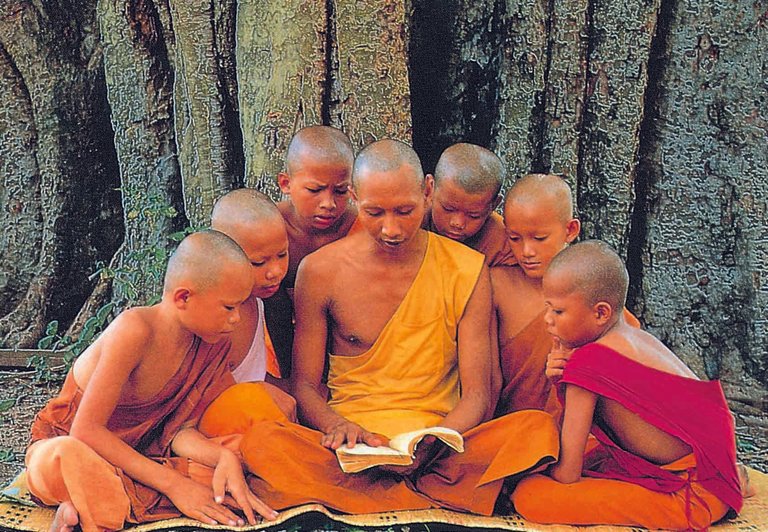
Buddhism dates back nearly 2,500 years and in that time it has branched off into many different sects of belief. These sects all maintain a general philosophical undertone; however, they are great differences religiously. For the most part there are three major branches that fall under the Buddhist name: Theravada, Mahayana, and Vajrayana. Different forms have branched off from these systems of belief with the most prevalent subgroups found under Mahayana.
Theravada Buddhism, or “the way of the elders”, is predominately found in South Asia. It is a stricter form that preaches discipline and dedication. Theravada Buddhists believe that enlightenment and nirvana can only be reached through lifetimes of work. Due to the strenuous nature of this branch most followers become monks or nuns. Theravada tends to be more philosophical and “rational.” Practicers of this branch believe it to be the most original form of Buddhism. For this reason they often look down on Mahayana Buddhism: Theravada’s modern counterpart.
Mahayana Buddhism, or “the greater vehicle”, is a more religious, and more liberal form of Buddhism. It is found primarily in North Asia. Followers believe that enlightenment can be met in one lifetime and by people not completely dedicated to the religion, giving more people an opportunity to reach nirvana than the other branches. This is where Mahayana’s receive their nickname. Their vehicle is greater in that it has the capacity to bring more people to enlightenment.
This “liberal” interpretation is the most accepted form of Buddhism to date. It has many sub-groups including: Nichiren Buddhism, Pure Land Buddhism, Tendai/T’ien Tai Buddhism, and Zen/Ch’an Buddhism. Each group has different interpretations of different texts but is fairly similar in structure of belief. Nichiren Buddhism and Pure Land Buddhism both focus on chanting to gain insight. Tendai/T’ien Tai Buddhism focuses Lotus Sutra: a religious textbook rooted in the teachings of many, eternal enlightened ones. Zen Buddhism focuses on meditation and inward thinking and is also the most recognizable form in the western world.
The outlier in Buddhism is Vajrayana Buddhism, which is found almost entirely in Tibet. Vajrayana Buddhism is so prominent in Tibet that it is often times referred to as Tibetan Buddhism. It focuses on two different holy texts: the Kanjyur and the Tenjyur. Tibetan Buddhism has a strong focus on rituals and meditation. Due to the secluded nature of its people it has many cultural differences from the other sects. Tibetan Buddhism parallels to Mahayana Buddhism in that followers often delay enlightenment in order to teach others, although the means by which they do this are dissimilar.
Buddhists in Tibet have another dimension to their beliefs not found in the other forms. There is a stronger need for guidance found in this sect. In Tibetan Buddhism one cannot reach enlightenment without the help of a guru. These gurus, or Lamas, believe they prolong their existence on this earth in order to guide others. Tibetan Buddhism is focuses on most of the same texts as Mahayana Buddhism, but their practices are vastly different.
All sects of Buddhism follow similar philosophical constructs, although they vary on interpretations of Buddhist texts and teachings. Different regions under different cultures have developed different understandings of the world around them. This does not mean one region contains only one type of Buddhism. The basic principal of truth found in all Buddhist sects makes transition of views not only justifiable, but also necessary.
Hi! I am a robot. I just upvoted you! I found similar content that readers might be interested in:
https://www.scribd.com/doc/248972055/exploring-culture-buddhism
Buddhism is pure and free from miss concepts.